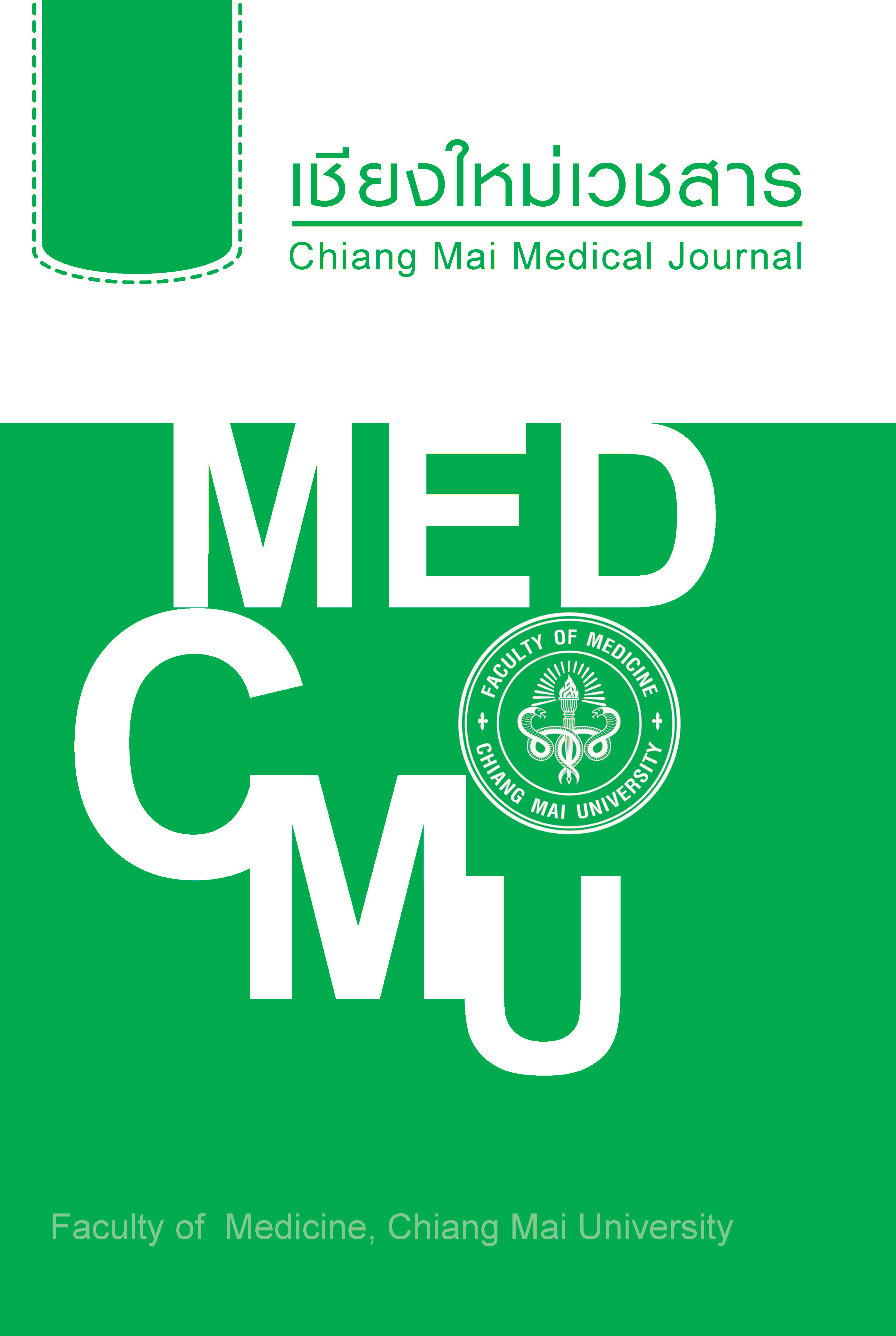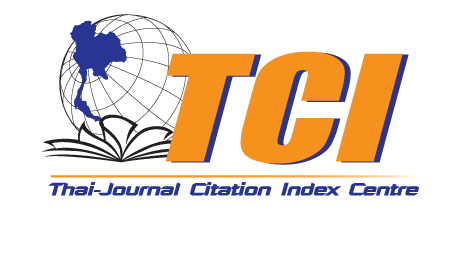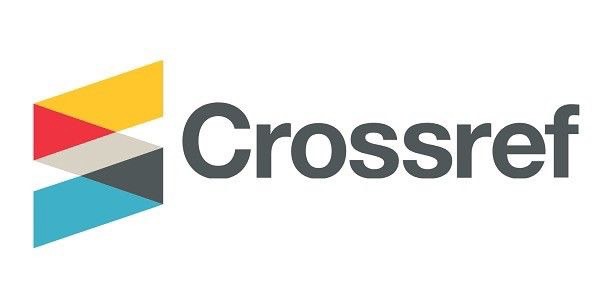Screening for in vitro amoebicidal activity of plant essential oils against Acanthamoeba sp.
Keywords:
Acanthamoeba spp., amoebicidal activities, essential oils, Piper retrofractum, Citrus hystrixAbstract
Objective To screen for in vitro amoebicidal activity of essential oils extracted from 10 plant species from three botanical families against Acanthamoeba sp.
Methods Essential oils were extracted from dry material of 10 plant species using steam distillation; the percentage yields and physical characteristics of the derived essential oils were recorded. The cyst and trophozoite stages of Acanthamoeba sp. were harvested separately from monoxenic agar and axenic peptone yeast glucose (PYG) cultures, respectively. Amoebicidal activities of each essential oil were determined in vitro at a concentration of 50 mg/mL. After 24 h of incubation, morphological changes, cell viability, and percentage mortality of amoebae were investigated using a light microscope.
Results Essential oils were successfully extracted from all ten plant species with average yields on a dry weight basis ranging from 0.3 to 6.7% (v/w). Five out of the ten essential oils tested, including the oils of Piper retrofractum Vahl., Piper nigrum Linn., Citrus hystrix DC., Curcuma longa Linn., and Kaempferia pandurata Roxb., effectively eradicated Acanthamoeba trophozoites, with mortality up to 100%. Furthermore, both P. retrofractum and C. hystrix oils also exerted cysticidal activity against Acanthamoeba sp., with 3.35% and 43.62% mortality, respectively.
Conclusions This is the first report on the amoebicidal activities of these essential oils, of which the most effective were the P. retrofractum and C. hystrix oils which affected both the trophozoite and the cyst stages of Acanthamoeba. The results of this study provide basic knowledge for future studies of the amoebicidal potential of these plant essential oils which could potentially be developed and applied for the treatment of acanthamoebiasis for which no effective drug is currently available
References
Wannasan A, Chaiwong P, Bunchoo M, Morakote N. Occurence of thermotolerant Naegleria and Acanthamoeba in some natural water sources in Chiang Mai. Chiang Mai Med J. 2009;48:117-24.
Wannasan A, Uparanukraw P, Songsangchun A, Morakote N. Potentially pathogenic free-living amoebae in some flood-affected areas during 2011 Chiang Mai flood. Rev Inst Med Trop Sao Paulo. 2013;55:411-6.
Khan NA. Acanthamoeba: Biology and pathogenesis. Norfolk, UK: Caister Academic Press; 2009.
Lorenzo-Morales J, Khan NA, Walochnik J. An update on Acanthamoeba keratitis: diagnosis, pathogenesis and treatment. Parasite. 2015;22:10.
Osato MS, Robinson NM, Wilhelmus KR, Jones DB. In vitro evaluation of antimicrobial compounds for cysticidal activity against Acanthamoeba. J Infect Dis. 1991;13:431-5.
Siddiqui R, Aqeel Y, Khan NA. The development of drugs against Acanthamoeba infections. Antimicrob Agents Chemother. 2016;60:6441-50.
Roongruangchai J, Sookkua T, Kummalue T, Roongruangchai K. Pouzolzia indica methanolic extract fraction 2 and povidone-iodine induced changes in the cyst of Acanthamoeba spp.: light and electron microscopic studies. J Med Assoc Thai. 2009;92:1492-9.
Roongruangchai K, Kummalue T, Sookkua T, Roongruangchai J. Comparison of Pouzolzia indica methanolic extract and Virkon® against cysts of Acanthamoeba spp. Southeast Asian J Trop Med Public Health. 2010;41:776-84.
Smitinand T. Thai plant names (botanical names-vernacular names). Bangkok: Royal Foresst Department; 1980.
El-Sayed NM, Ismail KA, Ahmed SA, Hetta MH. In vitro amoebicidal activity of ethanol extracts of Arachis hypogaea L., Curcuma longa L. and Pancratium maritimum L. on Acanthamoeba castellanii cysts. Parasitol Res. 2012;110:1985-92.
Sauter IP, Rossa GE, Lucas AM, Cibulski SP, Roehe PM, da Silva LAA, et al. Chemical composition and amoebicidal activity of Piper hispidinervum (Piperaceae) essential oil. Ind Crops Prod. 2012;40:292-5.
Visvesvara GS.Parasite Culture: Acanthamoeba and Naegleria spp. In: Garcia LS, editor. Clinical Microbiology Procedures Handbook. 3rd ed. Washington, DC: ASM Press; 2010.
Strober W. Trypan blue exclusion test of cell viability. Curr Protoc Immunol. 2001; Appendix 3: Appendix 3B. doi: 10.1002/0471142735.ima03bs21.
Degerli S, Tepe B, Celiksoz A, Berk S, Malatyali E. In vitro amoebicidal activity of Origanum syriacum and Origanum laevigatum on Acanthamoeba castellanii cysts and trophozoites. Exp Parasitol. 2012;131:20-4.
Malatyali E, Tepe B, Degerli S, Berk S, Akpulat HA. In vitro amoebicidal activity of four Peucedanum species on Acanthamoeba castellanii cysts and trophozoites. Parasitol Res. 2012;110:167-74.
Polat ZA, Vural A, Ozan F, Tepe B, Ozcelik S, Cetin A. In vitro evaluation of the amoebicidal activity of garlic (Allium sativum) extract on Acanthamoeba castellanii and its cytotoxic potential on corneal cells. J Ocul Pharmacol Ther. 2008;24:8-14.
Kim KJ, Lee MS, Jo K, Hwang JK. Piperidine alkaloids from Piper retrofractum Vahl. protect against high-fat diet-induced obesity by regulating lipid metabolism and activating AMP-activated protein kinase. Biochem Biophys Res Commun. 2011;411:219-25.
Pruthi JS. Major spices of India: crop management and post-harvest technology. New Delhi: ICAR Publications; 1993. p. 114-79.
Ravindran PN. Black pepper: Piper nigrum. Series: Medical and aromatic plants-industrial profiles. Kerala: CRC Press; 2000. p. 1-526.
Sharon MH. Herb-drug interaction handbook. New York: Church Street Books; 2002. p. 123-527.
Fortin H, Vigor C, Lohézic-Le Dévéhat F, Robin V, Le Bossé B, Boustie J, Amoros M. In vitro antiviral activity of thirty-six plants from La Reunion Island. Fitoterapia. 2002;73:346-50.
Dasuki S. 202 Khasiat Herba (202 Benefits of Herbs). Selangor: Grup Buku Karangkraf; 2011. p. 222-3.
Norkaew O, Pitija K, Pripdeevech P, Sookwong P, Wongpornchai S. Supercritical fluid extraction and gas chromatographic-mass spectrometric analysis of terpenoids in fresh Kaffir lime leaf oil. Chiang Mai J Sci. 2013;40:240-7.
Saralamp P, Chuakul W, Temsiririrkkul R, Clayton T. Medicinal plant in Thailand. 1st ed. Bangkok: Amarin Printing and Publishing Public Company; 1996.
The Pharmacopoeia Commission of People’s Republic of China. English Edition Pharmacopoeia of the People’s Republic of China, vol. 1. Beijing: Chemical Industry Press; 2015.264 p.
The Pharmacopoeia Commission of People’s Republic of China. English Edition Pharmacopoeia of the People’s Republic of China, vol. 1. Beijing: Chemical Industry Press; 2015.243 p.
Charoensin S, Punvittayagul C, Pompimon W, Mevatee U, Wongpoomchai R. Toxicological and clastogenic evaluation of pinocembrin and pinostrobin isolated from Boesenbergia pandurata in Wistar rats. Thai J Toxicology. 2010;25:29-40.
Eisai PT. Medicinal herb index in Indonesia. 2nd ed. Jakarta: PT. Eisai Indonesia; 1995.
Heyne K. Tumbuhan berguna Indonesia I. Jakarta: Yayasan Sarana Wana Jaya; 1987.
Oyedeji OA, Adeniyi BA, Ajayi O, König WA. Essential oil composition of Piper guineense and its antimicrobial activity. Another chemotype from Nigeria. Phytother Res. 2005;19:362-4.
Tirillini B, Velasquez ER, Pellegrino R. Chemical composition and antimicrobial activity of essential oil of Piper angustifolium. Planta Med. 1996;62: 372-3.
Monzote L, García M, Montalvo AM, Scull R, Miranda M. Chemistry, cytotoxicity and anti Leishmanial activity of the essential oil from Piper auritum. Mem Inst Oswaldo Cruz. 2010;105:168-73.
Sariego I, Monzote L, Scull R, Díaz A, Caballero Y. Activity of essential oils from Cuban plants agains Leishmania donovani and Trichomonas vaginalis. Int J Essent Oil Therap. 2008;2:172-4.
Khan M, Siddiqui M. Antimicrobial activity of Piper fruits. Nat Prod Rad. 2007;6:111-3.
Wongsariya K, Phanthong P, Bunyapraphatsara N, Srisukh V, Chomnawang MT. Synergistic interaction and mode of action of Citrus hystrix essential oil against bacteria causing periodontal diseases. Pharm Biol. 2014;52:273-80.
Rammanee K, Hongpattarakere T. Effects of tropical citrus essential oils on growth, aflatoxin production, and ultrastructure alterations of Aspergillus flavus and Aspergillus parasiticus. Food Bioprocess Technol. 2011;4:1050-9.
Changtam C, de Koning HP, Ibrahim H, Sajid MS, Gould MK, Suksamrarn A. Curcuminoid analogs with potent activity against Trypanosoma and Leishmania species. Eur J Med Chem. 2010;45: 941-56.
Aditya NP, Chimote G, Gunalan K, Banerjee R, Patankar S, Madhusudhan B. Curcuminoids-loaded liposomes in combination with arteether protects against Plasmodium berghei infection in mice. Exp Parasitol. 2012;131:292-9.
Moghadamtousi SZ, Kadir HA, Hassandarvish P, Tajik H, Abubakar S, Zandi K. A review on antibacterial, antiviral, and antifungal activity of curcumin. Biomed Res Int. 2014. doi: 10.1155/2014/186864.
Natta L, Orapin K, Krittika N, Pantip B. Essential oil from five Zingiberaceae for anti-food borne bacteria. Int Food Res J. 2008;15:337-46.
Taweechaisupapong S, Singhara S, Lertsatitthanakorn P, Khunkitti W. Antimicrobial effects of Boesenbergia pandurata and Piper sarmentosum leaf extracts on planktonic cells and biofilm of oral pathogens. Pak J Pharm Sci. 2010;23:224-31.
Chu DM, Miles H, Toney D, Ngyuen C, Marciano-Cabral F. Amebicidal activity of plant extracts from Southeast Asian Acanthamoeba spp. Parasitol Res. 1998;84:746-52.
Sukumar K, Perich MJ, Boobar LR. Botanical derivatives in mosquito control: a review. J Am Mosq Control Assoc. 1991;7:210-36.
Tawatsin A, Wratten SD, Scott RR, Thavara U, Techadamrongsin Y. Repellency of volatile oils from plants against three mosquito vectors. J Vector Ecol. 2001;26:76-82.
Shaalan EA, Canyon DV, Younes MW, Abdel-Wahab H, Mansour AH. Synergistic efficacy of botanical blends with and without synthetic insecticides against Aedes aegypti and Culex annulirostris mosquitoes. J Vector Ecol. 2005;30:284-8.
Kumar R, Lloyd D. Recent advances in the treatment of Acanthamoeba keratitis. Clin Infect Dis. 2002;35:434-41.
Derda M, Hadaś E, Thiem B. Plant extracts as natural amoebicidal agents. Parasitol Res. 2009;104: 705-8.
Downloads
Published
How to Cite
Issue
Section
License

This work is licensed under a Creative Commons Attribution-NonCommercial-NoDerivatives 4.0 International License.








